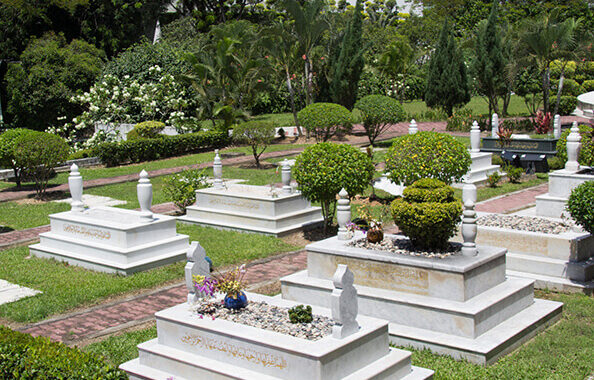Malaysia, a diverse and multicultural nation, is home to a significant Muslim population. As a result, the country boasts a rich Islamic heritage, which is evident in various aspects of daily life, including religious architecture, customs, and traditions. One of the most intriguing facets of Malaysia’s Islamic heritage is the design and characteristics of Muslim tombstones. These tombstones, often elaborately decorated and inscribed, reflect the unique blend of cultural influences and religious devotion found in Malaysia. In this article, we will explore the characteristics of Muslim tombstones in Malaysia and delve into their historical and cultural significance.
-
Diversity in Design
One of the most striking features of Muslim tombstones in Malaysia is their diversity in design. These tombstones come in a wide range of shapes, sizes, and materials. Common shapes include rectangular, oblong, or even a combination of multiple shapes. The choice of material can vary from plain granite to more ornate marble or sandstone. Each design reflects the individuality and personal preferences of the deceased or their family.
-
Islamic Calligraphy
Islamic calligraphy holds a significant place in the design of Muslim tombstones in Malaysia. Arabic inscriptions from the Quran or religious phrases are meticulously engraved onto the tombstones. These inscriptions often include verses from the Quran that provide comfort and solace to those visiting the graves. The use of calligraphy not only adds to the aesthetic appeal but also serves as a reminder of the deceased’s faith and devotion.Visit more:What is written on tombstones for Muslims?
-
Geometric Patterns
Geometric patterns are another common characteristic of Muslim tombstones in Malaysia. These patterns can be found as decorative borders, intricate designs, or even as a backdrop to calligraphy. Geometric motifs such as arabesques, stars, and interlocking shapes are used to create visually appealing and spiritually significant tombstones.
-
Floral and Natural Elements
Incorporating floral and natural elements is a unique feature of Malaysian Muslim tombstones. Flowers, trees, and leaves are often engraved or sculpted onto tombstones, symbolizing the cycle of life and rebirth. These elements not only beautify the tombstone but also reflect the belief in the eternal nature of the soul.
-
Personalization
Many Muslim tombstones in Malaysia are personalized to honor the deceased. They may include the person’s name, birth and death dates, and sometimes a brief biography or epitaph. Some tombstones even feature photographs of the departed, allowing visitors to connect more intimately with the person’s memory.
-
Cultural Influences
Malaysia’s Islamic heritage has been shaped by various cultural influences, including Malay, Chinese, Indian, and indigenous traditions. As a result, some tombstones may incorporate elements from these cultures, creating a unique fusion of Islamic and local aesthetics. For example, Chinese Muslims may have tombstones adorned with Chinese calligraphy or symbols.
-
Regional Variations
There are regional variations in the characteristics of Muslim tombstones within Malaysia. For instance, tombstones in the northern states like Kelantan and Terengganu often feature more intricate carvings and calligraphy, while those in the central region may be more minimalist in design. These variations reflect the diverse cultural landscape of the country.

